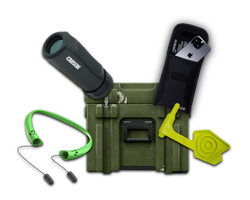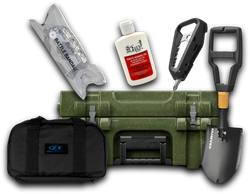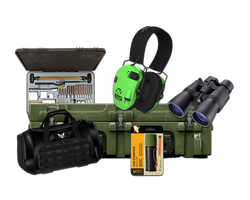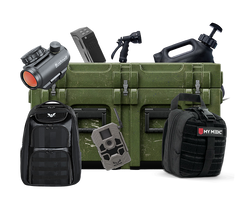Can You Use a Sleeping Bag in a Hammock?
Table of Contents
- Introduction
- Understanding Hammock Insulation Needs
- Can You Use a Sleeping Bag in a Hammock?
- Alternatives to Sleeping Bags in a Hammock
- Practical Tips for Using a Sleeping Bag in a Hammock
- Conclusion
- FAQs
Introduction
Imagine this: you’re deep in the woods, the sun has dipped below the horizon, and you’re nestled comfortably in your hammock, swaying gently in the breeze. You reach for your trusty sleeping bag, but wait—can you actually use it in a hammock? This question stirs a mix of curiosity and confusion among both novice campers and seasoned hammock enthusiasts.
Hammock camping has surged in popularity over the years, with many outdoor adventurers praising its comfort and versatility. However, the sleeping arrangement presents unique challenges, particularly when it comes to insulation. While sleeping bags are a staple for traditional camping, their effectiveness in a hammock setting warrants a deeper examination.
In this blog post, we will explore the intricacies of using a sleeping bag in a hammock, including the importance of proper insulation, alternative options, and practical tips for maximizing comfort. By the end, you'll have a comprehensive understanding of how to stay warm and cozy while suspended between the trees, along with insights into Crate Club’s selection of tactical gear that can enhance your outdoor experience.
Understanding Hammock Insulation Needs
The Challenge of Insulation
When camping on the ground, sleeping bags serve as an effective barrier against the cold, thanks to the insulation they provide from the ground beneath. However, hammock camping flips this concept on its head. Instead of lying on the ground, you’re suspended, allowing air to circulate beneath you. This can lead to heat loss through convection, a phenomenon commonly referred to as "cold butt syndrome."
When you lie in a sleeping bag, the insulation underneath your body gets compressed, significantly reducing its effectiveness. For example, if you’re using a down sleeping bag, the loft that provides warmth is lost when you lay on it. Therefore, relying solely on a sleeping bag for warmth in a hammock may leave you shivering through the night.
The Importance of Under Insulation
To combat heat loss in a hammock, most seasoned hammock campers utilize an underquilt or sleeping pad. An underquilt hangs beneath the hammock, trapping heat without compressing the insulation. It acts as a layer of warmth while allowing the sleeping bag to function as a top quilt. This combination significantly enhances your comfort and warmth during chilly nights.
In essence, while you can use a sleeping bag in a hammock, it’s essential to understand that it won’t provide adequate insulation on its own. Instead, it should be paired with a suitable underquilt or sleeping pad to ensure a comfortable night’s sleep.
Can You Use a Sleeping Bag in a Hammock?
Direct Use of Sleeping Bags
Yes, you can technically use a sleeping bag in a hammock, but it requires some adjustments. Here are a few methods to make it work:
-
Top Quilt Approach: Rather than lying fully zipped inside the sleeping bag, unzip it to your knees and use it as a top quilt. This allows you to keep your upper body warm while leaving your legs free. Ideally, you should also have an underquilt or a sleeping pad to insulate your backside.
-
Partial Zipping: You can partially zip the sleeping bag, creating a footbox while allowing the top to remain open. This setup offers a slight degree of flexibility, enabling you to adjust your comfort level throughout the night.
-
Mummy Style: If you prefer to maintain the traditional mummy style, be aware that getting in and out of a tightly zipped sleeping bag can be cumbersome in a hammock. Additionally, the insulation beneath you will be compressed, which may leave you feeling cold.
Considerations for Using a Sleeping Bag
-
Temperature Ratings: Always check the temperature rating of your sleeping bag. While a bag may be rated for colder temperatures, remember that sleeping on it will reduce its effectiveness. If the forecast predicts temperatures nearing the lower limit of your bag’s rating, consider supplementary insulation options.
-
Personal Comfort: Hammocks can feel constrictive if you’re used to the spaciousness of a tent. A sleeping bag, especially a mummy-style, can exacerbate that feeling. Consider switching to a sleeping bag with a more relaxed fit or transitioning to a top quilt for enhanced comfort.
-
Weight and Packability: If you’re backpacking, the weight and packability of your gear become crucial. Traditional sleeping bags can be bulky, whereas modern alternatives like top quilts and underquilts offer significant weight savings and pack down smaller.
Alternatives to Sleeping Bags in a Hammock
While sleeping bags can be used in hammocks, there are more efficient options available. Here are a few alternatives that may suit your needs better:
1. Underquilts
Underquilts are designed specifically for hammock camping. They hang beneath your hammock, providing insulation without the compression issues associated with sleeping bags. They’re available in various materials, including down and synthetic insulation, allowing you to choose based on your budget and temperature needs.
2. Top Quilts
Top quilts serve a similar purpose as sleeping bags but are often lighter and more comfortable for hammock camping. They lack a zipper and footbox, providing more freedom of movement. Many top quilts are designed with a tapered shape to minimize weight while maximizing warmth.
3. Sleeping Pads
A sleeping pad can be a suitable alternative for under insulation. While they may not provide as much warmth as dedicated underquilts, they can suffice in warmer weather or when temperatures are not too low. However, sleeping pads can shift during the night, making them less stable than an underquilt.
4. DIY Solutions
For those looking to save money, consider DIY insulation options. Some campers use old sleeping bags by modifying them into underquilts or top quilts. With some basic sewing skills, you can repurpose a sleeping bag to better suit your hammock needs.
Practical Tips for Using a Sleeping Bag in a Hammock
Test Your Setup
Before heading out on a multi-day trip, test your sleeping bag and hammock setup in your backyard or a nearby campsite. This allows you to adjust your configuration and ensure you’re comfortable before relying on it in the wilderness.
Layering for Warmth
Consider layering your insulation. If you expect temperatures to drop significantly, use both a sleeping bag and an underquilt. This combination provides multiple layers of insulation, ensuring you stay warm throughout the night.
Use a Sleeping Bag Liner
Sleeping bag liners can add an extra layer of warmth to your setup. They’re lightweight, packable, and can be used to increase the temperature rating of your sleeping bag. Liners also help keep your sleeping bag clean, extending its lifespan.
Stay Dry
Moisture can quickly sap your warmth, so keep your gear dry. Use a waterproof tarp above your hammock to shield against rain, and ensure your sleeping bag and underquilt remain dry during your trip. Crate Club offers a variety of tarps and waterproof gear to help you stay prepared in unexpected weather conditions.
Conclusion
So, can you use a sleeping bag in a hammock? The answer is yes, but with caveats. While sleeping bags can provide some insulation, they are most effective when combined with other forms of insulation, such as underquilts or sleeping pads. Understanding how to maximize your setup will significantly enhance your camping experience.
Remember, staying warm and comfortable is key to enjoying your time outdoors. Whether you choose to use a sleeping bag or opt for more specialized gear, being well-prepared is essential for a successful hammock camping trip.
If you're looking to expand your outdoor gear collection, consider exploring the tactical offerings from Crate Club. With subscription services that deliver top-quality gear tailored to your needs, you can be well-equipped for all your adventures. Check out the Crate Club Subscription Services and browse the Crate Club Shop to find the perfect gear for your next camping excursion.
FAQs
1. Is it safe to use a sleeping bag in a hammock?
Yes, it is safe to use a sleeping bag in a hammock, but it's essential to ensure you have adequate insulation to prevent heat loss. Pairing it with an underquilt or sleeping pad will enhance your warmth and comfort.
2. What is the difference between an underquilt and a sleeping pad?
An underquilt hangs beneath the hammock and provides insulation without compression, while a sleeping pad lies inside the hammock and can compress insulation. Underquilts are generally preferred for cold weather as they maintain insulation loft.
3. Can I use a sleeping bag as a top quilt in a hammock?
Yes, using a sleeping bag as a top quilt is a common practice among hammock campers. Simply unzip the bag and lay it over you, allowing for more freedom of movement.
4. What temperature should I consider when choosing insulation for hammock camping?
When selecting insulation, consider the lowest expected temperature during your trip and your personal tolerance for cold. Always err on the side of caution and have additional layers available for unexpected temperature drops.
5. How do I keep my sleeping bag dry while hammock camping?
Use a waterproof tarp above your hammock to shield against rain and moisture. Additionally, store your sleeping bag in a waterproof stuff sack to prevent it from getting wet during your hike.
By understanding the nuances of using a sleeping bag in a hammock and taking the necessary precautions, you can enjoy many comfortable nights under the stars. Happy camping!
Share this article



